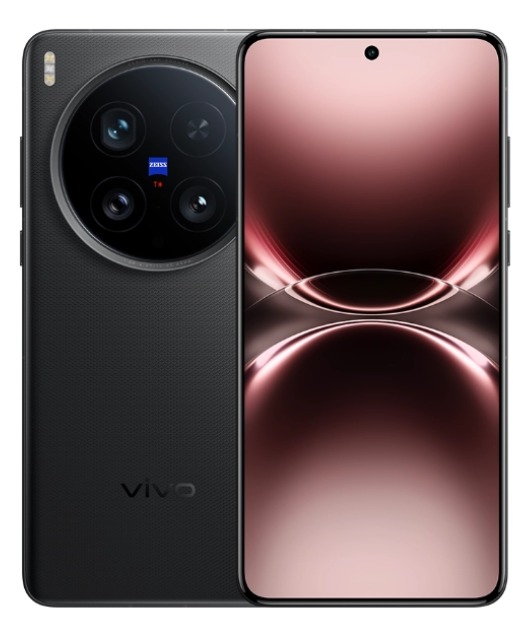
Vivo X200 Ultra and Nubia Z70S Ultra represent two of the most powerful Android flagships of 2025, each taking a distinct approach to premium features. While Vivo pushes the boundaries of mobile photography with Zeiss optics and gimbal stabilization, Nubia focuses on raw performance, gaming prowess, and cutting-edge design. This comparison matters because both phones share the same high-end Snapdragon 8 Elite chipset but differ in priorities, Vivo aims for pro-level imaging, and Nubia targets performance enthusiasts. Choosing between them comes down to what matters more: photography excellence or top-tier performance at a better value.
1. Design and Display

Build and Feel:
Both devices feature premium glass and aluminum builds with IP68/IP69 protection, but the Vivo X200 Ultra takes a slight lead with IP69 certification for both dust and high-pressure water resistance. Its construction also integrates Armor Glass, which offers improved durability under rough usage. The Nubia Z70S Ultra uses Gorilla Glass 7i, which is robust but not as impact-resistant as Armor Glass. The overall aesthetic of the Vivo feels more refined, especially with its professional Zeiss-branded camera module that gives it a photography-centric appeal.
Display Quality:
Vivo X200 Ultra features a 6.82-inch LTPO AMOLED panel with a superior resolution (1440 x 3168) and 4500 nits peak brightness. It supports Dolby Vision, HDR Vivid, and high-frequency 2160Hz PWM dimming, making it more suitable for long usage with less eye strain. In comparison, Nubia Z70S Ultra offers a slightly larger 6.85-inch AMOLED with 144Hz refresh rate and HDR10 support but peaks at 2000 nits with lower resolution (1216 x 2688). Vivo’s higher brightness, sharper pixel density, and advanced color handling make it a better display overall.
Verdict:
Vivo X200 Ultra wins on display quality and finish. Its superior visual tech and more durable glass make it the better-designed flagship for both media and durability-focused users.
2. Specifications

Performance:
Both phones share the Snapdragon 8 Elite chipset with the same CPU and GPU configurations. However, Vivo X200 Ultra uses UFS 4.1 storage while Nubia sticks with UFS 4.0. Vivo’s OriginOS is optimized for fluid multitasking and thermal efficiency, while Nubia’s Nebula AIOS is tuned more toward AI-based enhancements and gaming. Nubia offers a 24GB RAM variant, which benefits extreme multitaskers or power users, whereas Vivo maxes out at 16GB RAM. For consistent real-world flagship performance, both are elite-tier, but Nubia provides slightly more raw headroom.
Battery and Charging:
Nubia Z70S Ultra comes with a larger 6600 mAh battery compared to Vivo’s 6000 mAh, offering longer screen-on time. However, Vivo supports 90W wired and 40W wireless charging, including reverse options. Nubia supports only 80W wired with no wireless option. Vivo’s faster, more versatile charging ecosystem gives it an edge despite the slightly smaller battery.
Verdict:
While Nubia offers marginally better raw memory and capacity, Vivo’s faster UFS 4.1 storage, wireless charging, and reverse capabilities make it more versatile. Overall, the Vivo X200 Ultra is better for power efficiency and convenience.
3. Camera

Main and Secondary Lenses:
Vivo X200 Ultra outclasses its rival with a 200MP periscope telephoto lens (3.7x optical zoom), a gimbal-stabilized 50MP wide lens, and a high-end ultrawide module—each with Zeiss optics and advanced stabilization. It even supports Zeiss add-on lenses for professional-grade versatility. Nubia Z70S Ultra has a capable 64MP telephoto and 50MP standard and ultrawide shooters, but the sensor sizes are smaller and lack the advanced optics of Vivo. Vivo also supports a 3.4:1 macro mode, enhancing its pro-level utility.
Selfie Camera:
Vivo sports a high-resolution 50MP selfie shooter with autofocus and 4K video support, making it ideal for creators and video callers. Nubia’s 16MP under-display camera prioritizes aesthetics over quality. While innovative, it doesn’t match Vivo’s output in detail or clarity. Vivo’s front camera also supports 60fps 4K recording, a clear advantage.
Verdict:
Vivo X200 Ultra delivers a more powerful and versatile camera system across the board, with flagship-grade optics and software enhancements. It’s better suited for mobile photographers and videographers.
4. Pricing

Vivo X200 Ultra starts at approximately $1000, while the Nubia Z70S Ultra is priced more aggressively at around $800. Nubia offers excellent value for users prioritizing performance and battery without spending flagship-tier money. However, the Vivo justifies its premium with Zeiss optics, higher display quality, wireless charging, and a more refined build. For camera enthusiasts and multimedia users, the $200 premium offers meaningful upgrades. For budget-conscious power users, Nubia offers better specs per dollar.
5. Conclusion

Vivo X200 Ultra stands out with its Zeiss-certified gimbal OIS system, 200MP zoom lens, 2160Hz PWM dimming for eye comfort, and satellite SOS functionality (in select variants). These features are rare even in premium flagships. Nubia Z70S Ultra brings innovation with its under-display selfie camera and 24GB RAM variant, which is ideal for immersive gaming and futuristic design fans.
Verdict:
Vivo X200 Ultra is the better all-rounder with premium camera hardware, display technology, and charging capabilities. Nubia Z70S Ultra provides more memory, a bigger battery, and excellent performance at a lower cost. Choose Vivo for a flagship multimedia and photography experience. Choose Nubia for cutting-edge performance and value-focused flagship features.
Read More:
- Vivo X200 Ultra vs Honor Magic 7 Pro: Pro Camera or Fast Charging, What Will You Choose?
- Oppo Find X8s+ vs OnePlus 13: Is the OnePlus Worth $200 More Than the Find X8s+?
- Comparing Xiaomi 15 vs Xiaomi 15 Pro: Which is better?







